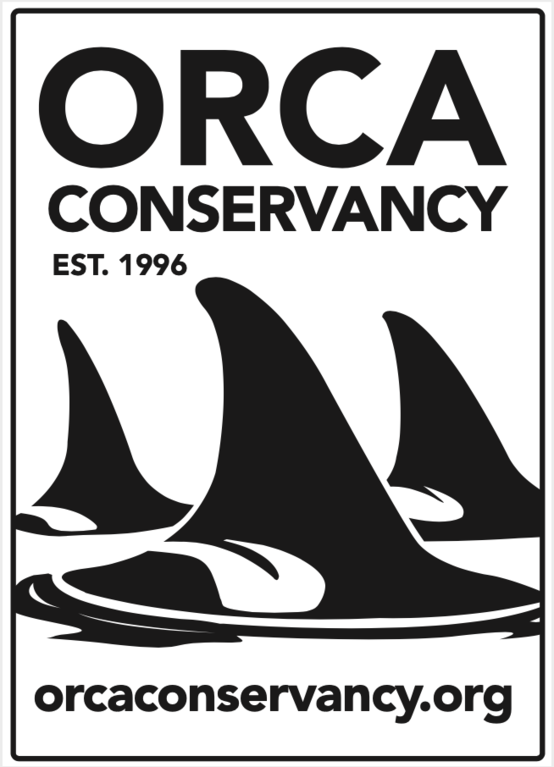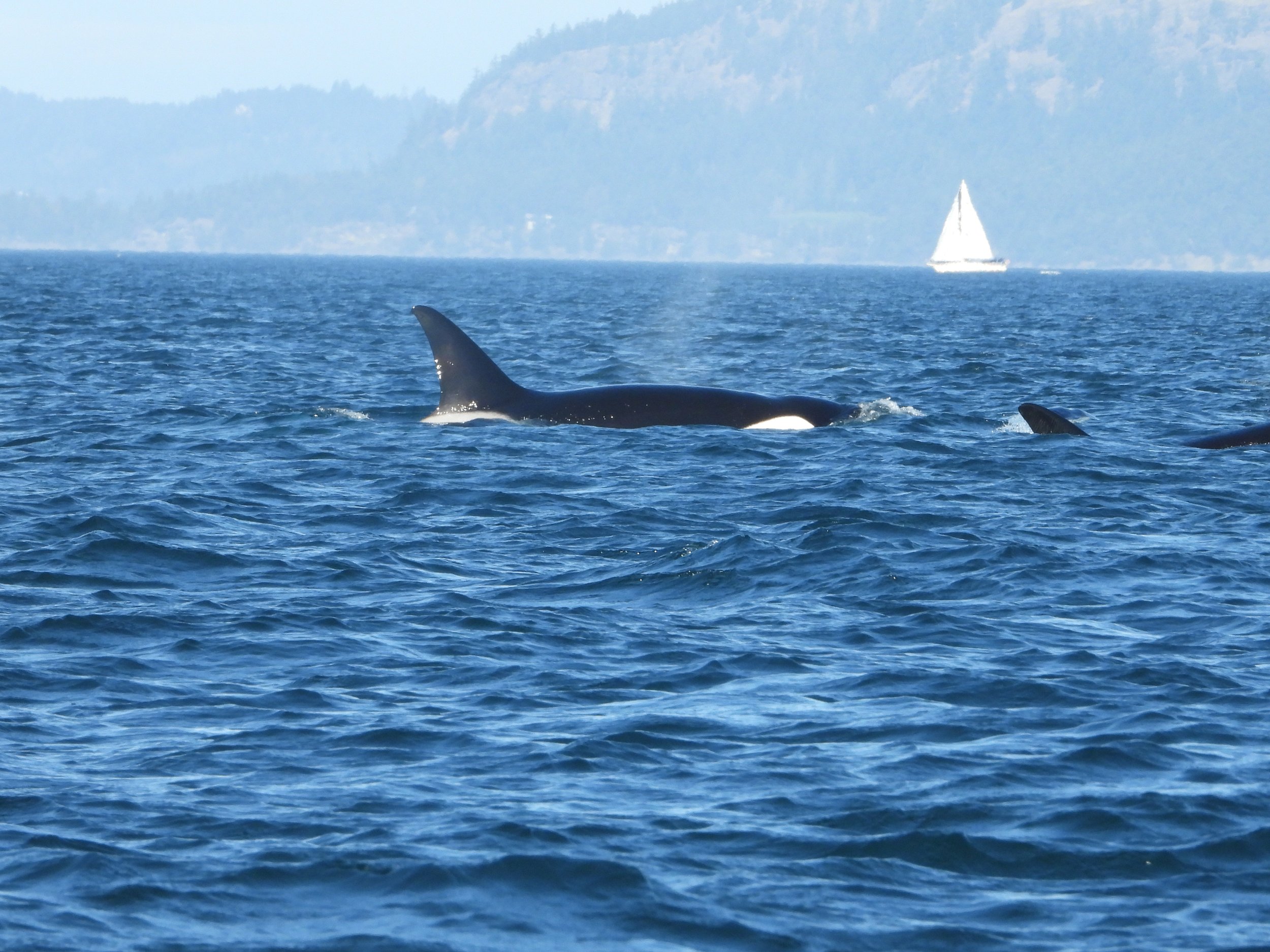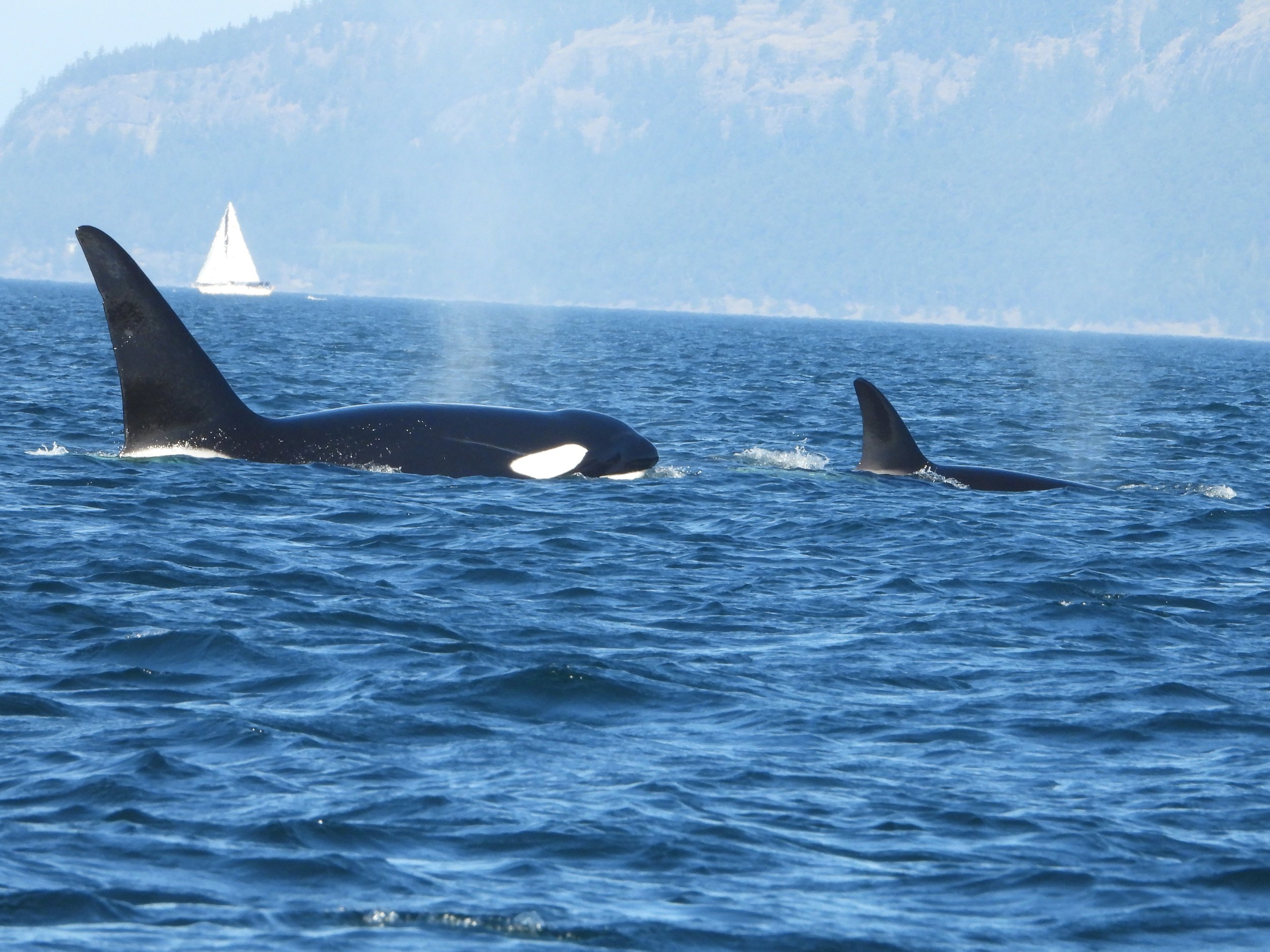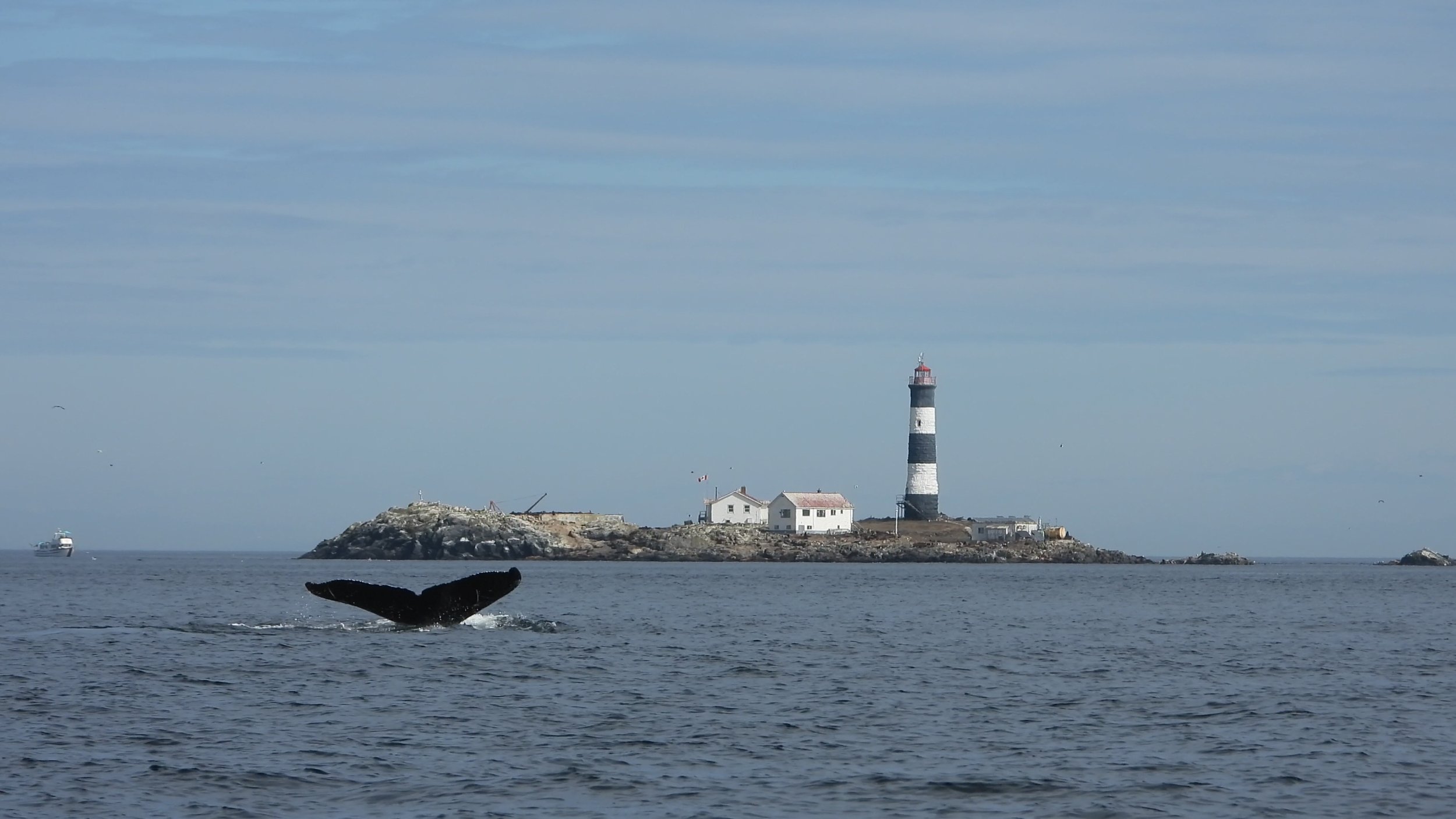September 17, 2023: T123s, Humpback Aggregation & K Pod| SJI & Race Rocks
Date: Sunday, September 17, 2023
Location: San Juan Island, WA & Race Rocks Ecological Preserve, British Columbia
Weather: Cloudy, 66 degrees Fahrenheit with 11mph winds from SE
Tide: Flood
Pods: T123s, K Pod, Humpbacks (12+)
Total Whale Count: ∼32
Behaviors: Traveling, hunting, foraging
Boat Count: Unknown
Humpback fluking in front of Race Rocks Ecological Preserve
A good friend of mine had a group reservation for the full-day whale watch trip with Maya’s Legacy Whale Watching, and members of their group could not make it, so I was invited last minute to join. The trip was slated to be 6-8 hours, to allow for enough time (weather and conditions permitting) to travel into the Strait of Juan de Fuca to see the humpback aggregation.
We started out the morning sailing out of Friday Harbor. The crew of Maya’s Legacy have a tradition for their full-day tours where they bring donuts from Roche Harbor, and only from this specific bakery. They told a story of how one time they brought donuts from Friday Harbor and saw no whales in a span of 6 hours, and since then they returned to sourcing donuts from Roche as a means of luck. Their method worked, and we were in store for so many whales.
An early report of orcas had come through, though over an hour had passed with no updates. Meaning, it was unclear where the orcas went and we would have to look for them. The crew went back and forth on whether or not to go look for the orcas or head out into the strait. We ultimately decided to go look for the orcas, and my friend aboard (who happened to be the one to find the T60s the previous day) was the one who spotted them. After getting them dialed, it appeared that the group we were with was once again the T60s. The numbers were right, and the timing made sense since we knew they had been in the area. The captain speculated that the group could have been the T109s, and I mentioned it could also be the T123s. The large males in both the T60s and T123s are considered doppelgangers of one another. In fact, T123A has the nickname Stanley, and the nickname of T60C is Yelnats, which is Stanley spelled backward as a nod to their similarity. Both matrilines also travel in a group of 4, making them quite easy to misidentify, and it happens pretty often when the two groups are both around. We did ultimately rule out the T123s because they hadn’t been seen in the area since Spring.
After a little back and forth, the crew reported this group to be the T60s. After a while of viewing the four on a hunt around the southwest side of Waldron Island, another whale watch company came on the radio and said they were with the T60s and in a different location, meaning, we weren’t with the T60s as we had initially thought. After ruling out the T123s, it turned out that was actually who we were with. After watching a successful hunt we left them to go find other whales.
We sailed east past Spiden Island making our way into Haro Strait, which was getting hit with some strong winds making for a bumpy ride. We crossed the strait over to the Canadian side where we found refuge hugging Vancouver Island, traveling South past Victoria before making our way into the Strait of Juan de Fuca. Once in the strait we continued west and made it to Race Rocks Ecological Preserve, which sits just east of Sooke. Right out of the gates we saw multiple humpbacks feeding around Race Rocks and watched several of them for hours.
We didn’t get a final count, but it was estimated there were 12+ humpbacks in the area. The naturalist was able to ID three of the humpbacks, which were BCY1029 "Hemlock", BCX1978 "Exclamation", and BCx2046 "Pinnacle". The humpbacks were traveling around following the bait balls and lunge feeding, which is quite an impressive site. Often mistaken as bubble netting (which is a behavior not seen in the Salish Sea), lunge feeding is when the animal lunges forward out of the water with its mouth open, scooping up water and small bait fish. We also saw a variety of birds, and at one point, a black bear was reported on shore, but it ducked into the trees before we could find it. Towards the end of our time, there was a male displaying some active surface behaviors with pec slaps, tail slaps, and even some cartwheels. While he was quite literally making a splash, a mother and calf surfaced right off the boat. A passenger on board who spent time studying humpbacks in Hawaii said she theorized the male was getting frustrated and trying to get the attention of the female with the calf, who was likely ignoring him because of her calf. Humpbacks are acoustic animals and use songs as well as percussive surface behaviors as forms of communication, especially around mating season.
During the time we were viewing the humpbacks, reports of another group of killer whales off of Salmon or Hein Banks were coming in. Because these whales were quite far out, no one could get a positive ID on them. Based on the shore-based reporting, the numbers and behaviors sounded like it could possibly be Southern Residents. The crew had poor service, so I continued to keep tabs on the sightings relaying them to the crew. We knew that a day or two prior, J Pod had been spotted north at Campbell River in British Columbia, and the crew suspected they had made their way south, while I suspected it was either K or L Pod that had come in.
The group of mystery whales was on the way back to port, so we decided to make a quick stop to determine who these whales were. (Note, that under current state rules around viewing Southern Resident killer whales, licensed whale watch companies are allotted 15 minutes to determine the ecotype of a whale before they are required to leave pending the ecotype or time of year. If determined to be SRKWs, the company is required to report the pod and location to specific agencies). As we were making our way back to San Juan Island, shore reports were indicating the whales had left the banks and were slowly making their way up island, milling around False Bay and Hannah Heights, two areas that are no accessible to the public making it hard for shore-based whale watchers to ID the whales.
As we arrived in Haro Strait, we approached Lime Kiln Point from a distance, slowly trending north down island. It wasn’t long until we spotted the whales, who were quite spread out and foraging. The captain remained well over 1,000 yards away from the whales (per regulations) as we suspected these were SRKWs. It was pretty bumpy and the whales were far, but I was able to snap a couple of ID shots of the whales (note my camera has a 3,000mm telephoto lens that can see up to 3 miles out). After snapping a handful of shots, I was able to confirm the IDs of K12 Sequim, K26 Lobo, and K42 Kelp, confirming my suspicion that this was K Pod! Once confirming these were SRKWs, we left and made our way back to port. Once on land, I jumped in my car and raced up to County Park to catch the trailers, which included K33 Tika passing. After which they continued north, and no additional reports came through.
T123s:
K Pod is one of three pods within the critically endangered Southern Resident killer whale population. K Pod consists of 4 matrilines and 16 individual whales.
Learn more about K Pod and all the 16 members on our Meet the Southern Resident Page.
TT123 Sidney (female b. 1985)
T123A Stanley (male b. 2000)
T123C Lucky (female b. 2012)
T123D Darcy (female b. 2018)
Learn more about the T123s and other matrilines on our Transient page.





































